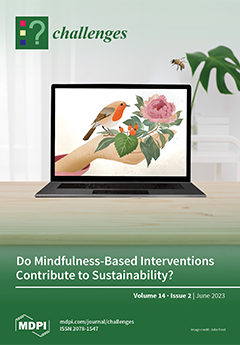Soil pollution is a threat to food security and ecological and human health. Cd is one of the most common pollutants in agricultural soil and, due its human toxicity, one of the most hazardous. Amaranth is a documented hyperaccumulator of Cd and other
[...] Read more.
Soil pollution is a threat to food security and ecological and human health. Cd is one of the most common pollutants in agricultural soil and, due its human toxicity, one of the most hazardous. Amaranth is a documented hyperaccumulator of Cd and other pollutants, and it is commonly grown in Asia and South America. A considerable amount of amaranth is grown in suboptimal conditions, including nutrient-poor acidic soils. The objective of this experimental study was to examine the capacity of
Amaranthus hypochondriacus to extract Cd from a nutrient-poor, acidic substrate that was spiked with different concentrations of Cd (2 and 20 mg kg
−1 dw) during a period of 180 days. The plants grown in the substrate that was spiked with 20 mg Cd kg
−1 dw did not develop into mature plants, but the plants grown in substrate that was spiked with 2 mg Cd kg
−1 dw extracted a significant amount of Cd from the substrate by accumulating it into the above-ground biomass. The Cd levels varied from 113 to 176 mg kg
−1 in the stems at the four measuring points, and from 64 to 94 mg kg
−1 in the leaves. The concentrations in the plants increased with time and reached a maximal concentration of 176 ± 45 mg kg
−1 dw for stems and 94 ± 41 mg kg
−1 dw for leaves after 180 days. The mean bioaccumulation factor in the plants was 86 ± 15 after 90 days, 72 ± 12 after 120 days, 105 ± 37 after 150 days, and 99 ± 31 after 180 days, which confirms the previously reported capacity of
Amaranthus hypochondriacus to hyperaccumulate Cd.
Amaranthus hypochondriacus may, thus, be used to improve ecological and human health by remediating moderately Cd-polluted soils, even in nutrient-poor acidic soils.
Full article
 to open them.
to open them.


